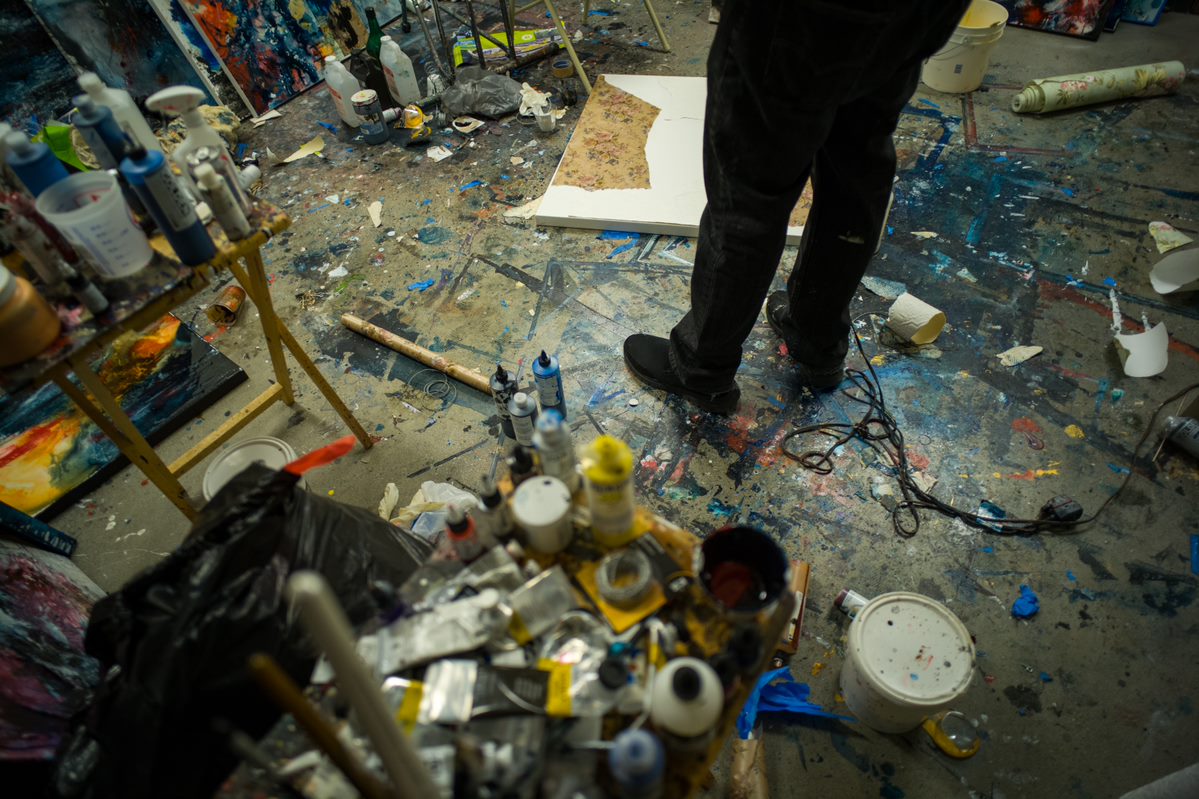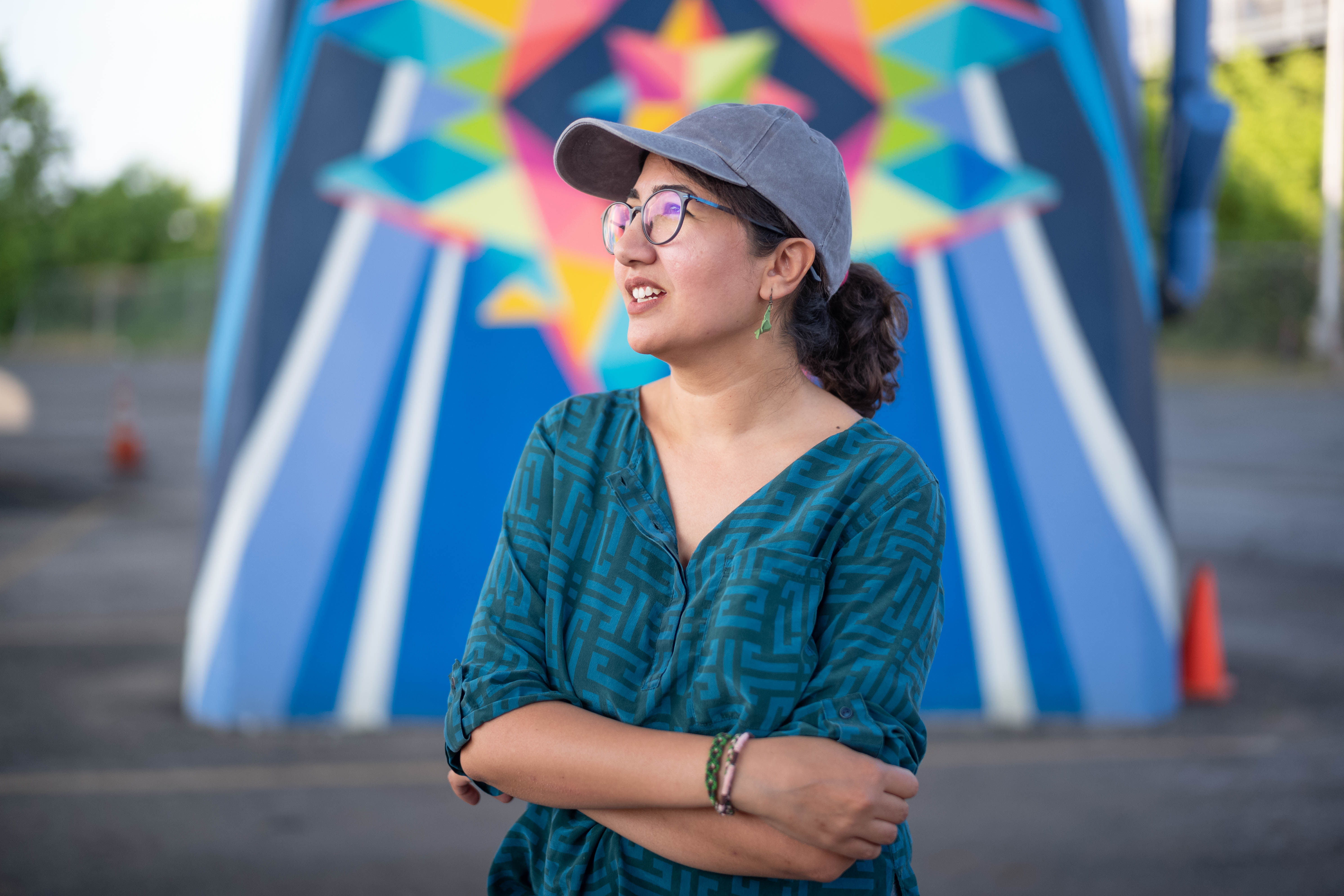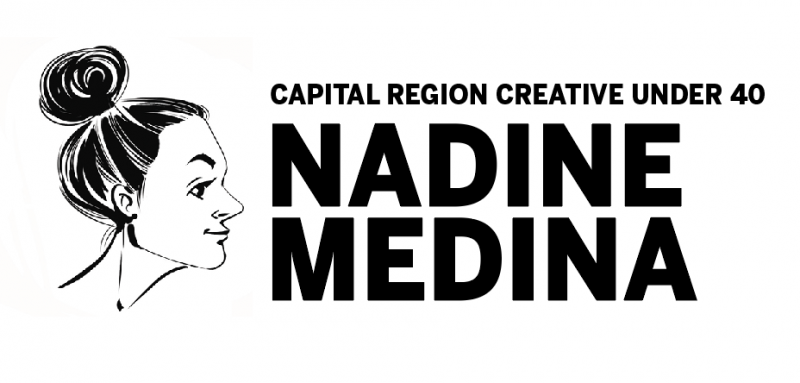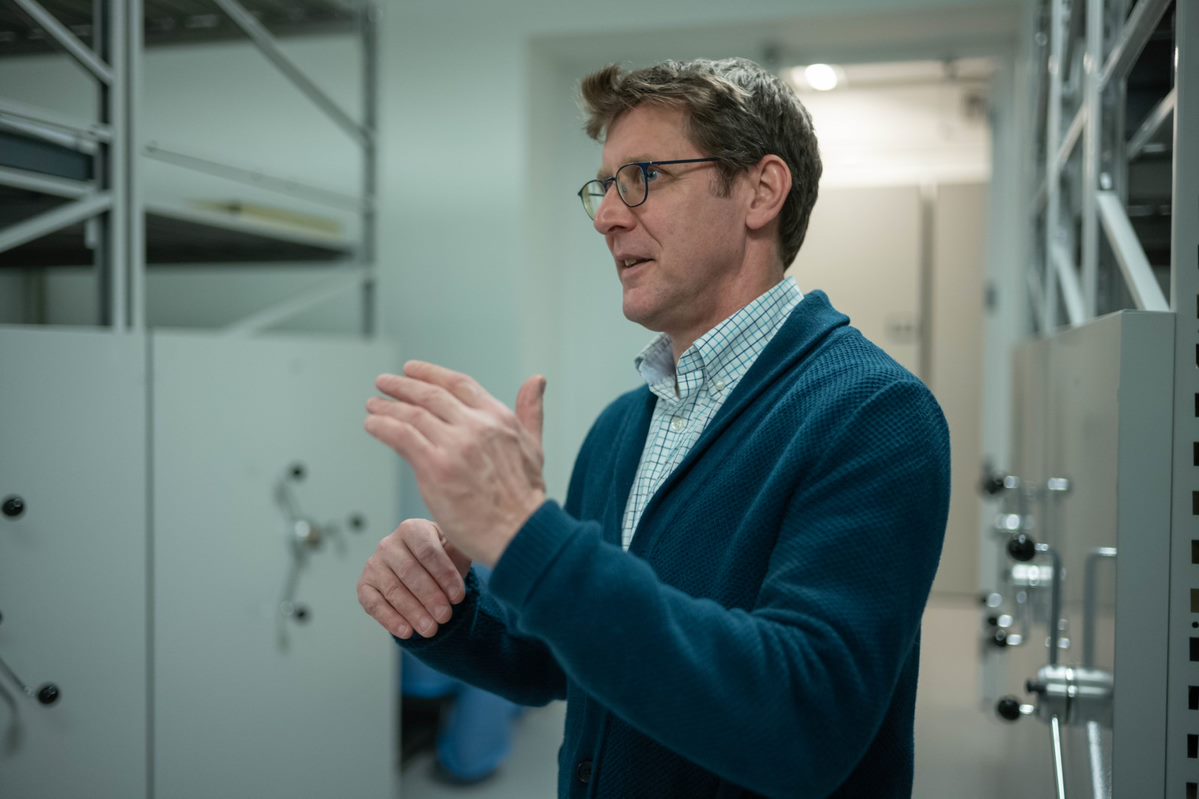Photographer, visual storyteller
Current hometown: Schenectady County
Current project: Amassing a collection of photos to donate to the Schenectady Historical Society COVID-19 Archive Project, and mentoring a local arts student
Collaborative Media’s Maker of the Week is made possible by KeyBank.
The slogan on Sue Clark’s website reads “Not All Who Wander Are Lost,” and it’s a saying that fits in well with her later-career reinvention of herself as a fine arts photographer. In addition to following her muse into favorite subjects such as horses, cars and Western lifestyle, she has also served as a volunteer photographer working with nonprofits including horse rescue and veterans’ groups, and mentored young photographers looking to get their works exhibited for the first time. She sees photography as a form of storytelling, and she has used it to accompany local magazine articles she’s written on a variety of subjects.
You declared yourself to be a photographer at a personal growth seminar. Tell me more about that.
I have taken part in Landmark education seminars since, I think, 2005. One of the things that we get training in is: “Make a declaration. It doesn’t matter if it’s the truth or not… play with who you say you are. Bite off more than you can chew.” That absolutely intrigued me. It’s like, what? You’re usually trained to not take on more than you can.
I found myself popping out of my seat and declaring that I was a photographer. Now, I had not been professionally trained for that… but I always felt that, when I saw the pictures that I’d taken, that I had a compositional eye. It’s like the camera allowed me to express myself in a whole different way, which I liked because I’m a very visual person.
At that point, you were just doing photography on the side?
Yeah, as a hobby at the time. But I knew I had some good ones… it’s just that I had never been trained. And this is the digital era, and I had not gone to school with a computer next to me. All that stuff was stopping me. Landmark is like, “Look at what’s stopping you, and step aside. Then declare yourself something, and just take the actions.”
About three weeks later, I entered four framed photos in the Altamont Fair. Lo and behold, when it was time to go in and look, I found a second-place ribbon hanging off one of them. That gave me permission to say, “I am a fine arts photographer.”
Looking at your work, I can see you have quite an interest in Western themes. I saw somewhere that you wrote: “There’s something about a man in a cowboy hat.”
I just love that look! And I started looking at the world of women who work with horses. I can’t afford to go out to the West all the time… I’ve taken beautiful photographs of the barrel racers at the Fonda Fairgrounds. I have become a volunteer photographer for Peaceful Acres and several other horse rescues. What, in my wanderings, I’ve most appreciated (when) stepping into that world — which I knew nothing about — is the strength of character it takes to be able to take horses out of slaughter auctions and bring them home in the condition they’re in, and to be able to find people that will help them, make them healthy and keep them safe. It’s just been an amazing journey to be able to step into all that.
I rode horses as a teenager, and I took horseback riding in college, but I never owned any. But once I started into my photography journey, after that declaration, I took the actions again and I signed myself up for some workshops out west… the Taos Art School had Carol Walker, who’s a very famous wild mustang photographer, and she was running a workshop. My hand went up… off I went! I found out that workshops can get us, as photographers who are in training, into places that normally photographers can’t go.
Like you just wouldn’t have access to it otherwise?
Yeah! The Saratoga Racing Museum would have their photo walks, and you, as (part of) a group with the photographer, could get closer to the horse barns than the average public. That’s where I’ve taken many photographs that I normally wouldn’t have had access to.
With the wild mustangs, they told me to leave my rental car home. They put us in four-wheel drives, a couple of the workshop participants, and we actually drove off the road in New Mexico (and) headed into southwest Colorado… They took those cars and put them down these — you can see them off the road — these sagebrush trails that I would’ve thought only horses could go on. We went down those trails and I saw skeletons of horses, I saw the vultures… it’s like, where are we going? What happens if we get a flat tire! But we got into these areas. She (Walker) took us up to this woman she knew that lived on top of a mesa that could get the wild horses to come to her home, and we got to set up our cameras and photograph all that.
Cars are another big interest of yours.
Oh yeah. I actually have been in a Camaro/Firebird club for a long time, and (I’ve) raced with Sports Car Club of America… I’ve had a lot of different cars. My father worked on cars, so I had a natural aptitude for that sort of thing. When a friend handed me the keys to their big-block Camaro and said, “Here, you’re gonna race it,” it’s like, it’s standard (shift), I’d never driven it before, but I got trained. And then I joined this car club, and I started racing.
It’s just broadened. I love car shows; I’ve been a volunteer photographer at the Saratoga Automobile Museum. Just last year, at their auction, I saw Christine for sale. (laughs) From the movie.
Oh! At first, I was thinking, “Christine who?”
Yeah, I got to take pictures of her!
And so again, with these wanderings, I stumble on this stuff that is just so cool. It’s like I’m collaborating with the world of wandering, which has given me photography that is so unusual. Part of who I am as an artist is a wanderer.
You talked about the challenge of digital photography, of not growing up with a computer. Would you prefer a world where we were still working in film?
I definitely like the digital world; I definitely like to see the results of what I’m doing immediately. I don’t take 1,000 photographs to get the best one… I will find something that intrigues me, and then I’ll work at it with the lens and with the lighting and everything until I get what I want and like.
It’s been a huge learning curve since I knew nothing about digital photography, including how to get the photographs off your camera onto the computer, how to send them out so that email doesn’t make them too small… That’s why I continued to sign up for workshops, for that end of the photography business, so I could understand — beyond taking the picture — how I can get it out there to the masses or on the internet, et cetera. Saratoga Library has been just extraordinary in the computer classes that they’ve offered in the past. I’ve learned a lot through them; I constantly go online to look at what else is out there… I know that I’m going to continually have to train myself in order to be able to have crisp, clear photographs that speak to people.
Some of the photographs, like the vintage GMC pickup, look like they’ve got some Photoshop work applied. What’s your technique?
I love photo editors! And I love (to) pop color, so I exaggerate sometimes in some of my photos.
I have always admired ads, and when I was growing up I would look at my mom’s scrapbooks that she made as a teenager. She would tear out these fully saturated, old-school 1940s magazine pictures of celebrities and ads for oatmeal and stuff. It was just totally over-the-top saturated, and I fell in love with that kind of look.
The world of filters and photo editing, that’s amazing… I’ve found some smaller photo editors for (my) phone; I’m using my phone a lot more, too, because they’re extraordinary as far as taking pictures. I just find that photo editors command a different interest and a different look. And with cars, you can do anything… (though) I wouldn’t do that to a fawn out in the woods.
For the Schenectady Historical Society COVID-19 Archive Project, you’ve done over 175 shots. I saw the little series with the discarded masks and face shields.
That was New Year’s Day, sadly. I took a walk, and that was outside of a nursing home.
Wow. Tell me about some of the other things that you’ve captured.
I actually went down to a truck stop… I wanted to honor truck drivers who pretty much had kept us supplied throughout this whole COVID period. (One driver) was gracious enough to say, “Sure,” but he said, “Wait a minute, let me get something.” He went back up into his truck, came back out, and brought his dog out. His dog sat next to him. It was important for people to see that he had company, and he was with his best friend when he traveled.
I went over to Scotia to the industrial site, and I stopped my car… where you can see 890 off in the distance going over the river, the sun was setting. I thought, “Well, now, that’s a pretty cool picture there,” and so I brought my lens up. I seem to have good timing with unusual circumstances, I don’t know what it is. As I’m taking the shot, here comes an all-white tractor-trailer… mind you, it’s dusk, it’s dark in the back with the hills back there… I got a white tractor-trailer on this bridge, going over the river with the sunset behind it.
Sometimes, photography is 50 percent your effort, but it’s also 50 percent luck that you happen upon a good scene. Like the lily pads I sent you… I went to the lake out here above Clifton Park and I walked out on the boardwalk and looked down, and saw the lily pads and was like, “That’s kind of neat, the colors and everything.” But then I saw it, and immediately the title “Floaters” came up… I saw that little white feather that was in the very bottom of what my composition was going to be.
I admire the ability to get more than a straight-on shot, (to) have the viewer work at what I’ve composed, so that they’ll have a little bit of a surprise.
I also wanted to say that I’ve had more opportunities during COVID, I think, to enter online shows, (such as) the Hyde Creative Challenge, the Enaction show up at the Spring Street Gallery, the Engage show with Stephen Tyson at the Massry Gallery…
Would you say there’s been more opportunity in terms of entering competitions because you can do it online?
Yes… I’ve spoken before about being a mentor for people… I’ve told other people about these challenges. They’ve joined in, they’ve absolutely been amazed… there’s been so many different opportunities online. And I hope that when they have art shows in the future, they do the virtual and the physical because I think there’s a lot of people that can’t get around, or that can’t afford to get around.
In other words, keep that going, even after the pandemic.
Yeah! How many more people will be able to see these art shows, if they offer it virtually?
I hope that they understand now that that is an opportunity for a lot more artists to participate in their work. Kudos to (the organizations above) for creating these opportunities for us.
How does your artistic life today relate to what you might have imagined for yourself when you were young?
Well, I knew I loved art, because I would go to art shows and I could be so inspired by anything artistic. I mean, we’re talking “American Graffiti” — I was over the moon with all the colors of the cars in there. I’ve loved Western art from way back when; I actually found myself at Wall Drug Store… they had a collection of Western art that was, bar none, one of the best collections ever.
I liked doing photography, but you go through a roll of film and then have to send it out and see if you’ve got one or two good shots. That wasn’t very encouraging. It’s when we got into digital that I could see results fairly quickly, and I think that’s when I decided that I can do this.
I’ve kind of veered off into storytelling/writing with my photography. I did an article on Hurricane Irene, because I went out to Rotterdam Junction with my camera and just roamed for, like, two weeks, further and further out… Again, wandering, I was able to meet a lot of people and get their story and then be able to write about it. You know, locally. I’m not talking Time Magazine, but I’ve been published in several local magazines.
Did you see yourself as a photographer growing up?
I didn’t have a camera in my hands growing up. I got one when I was probably in my 20s, and I would take pictures. But I guess one of the things I did to myself before taking the seminar was put myself down. Like, “I didn’t get formal training, therefore I can’t be this.”
That really was an obstacle for a while.
Yeah, absolutely. I didn’t feel like I could take that territory and own it… I almost had to stumble into everything you had to learn, like shutter speed and ISO and aperture. And that’s hard to learn if you’re not a mathematical person!
Say just a little bit more about your slogan: “Not all who wander are lost.” That seems to be your guiding principle.
I often picture people watching me and going, “All right. Doesn’t she belong to somebody? Shouldn’t she be home?” It’s just this voice in my head. I’m lucky, in that I’ve been able to take as much freedom as I want, and to go travel out west and do those workshops.
I’m a wanderer — and in this creation of art, a loner. Because I’m in my head, and that’s how I can easily create things. I’m having these conversations with myself and seeing and going, “OK, this is what I want.”
Find Sue online: SuePhotography.com
Wish to nominate a Maker of the Week? Email nominations.

Sue Clark photo.
Sue Clark photo.






